Protein matters for everyone, but when you eat mostly plants, you might wonder if you’re getting enough. Lots of people think animal foods are the only strong picks for protein, but that’s not true. Plant based diet protein sources can keep your body fueled, help build and maintain muscle, and support your overall health.
It’s easy to believe plants fall short, but with the right know-how, you can meet your needs and enjoy every meal. From lentils and chickpeas to tofu and seeds, there’s a wide range of delicious choices that can deliver plenty of protein. In this post, you’ll get a closer look at the best plant based diet protein sources and learn how to fit them into your daily routine.
If you’re just getting started with plant-based eating, check out this helpful plant-based diet to make planning your high-protein dishes even easier.
Why Protein Matters on a Plant-Based Diet
Protein is a big deal for our health, no matter what foods we eat. If you’ve started exploring plant based diet protein sources, you might have questions about how important protein really is—and how it works for people who skip animal products. Understanding why protein is key (and how much our bodies truly need) can clear up a lot of confusion, keep you feeling strong, and support your goals on a plant-based plan. Let’s look at why protein deserves your attention, especially if you’re building your plate around plants.
Protein’s Essential Role in the Body
Our bodies run on protein. It’s the building block for muscle, skin, hair, and even hormones. Every cell in your body needs protein to repair itself, grow, and do its daily job. Here’s what makes protein such a powerhouse:
- Muscle maintenance: Protein helps rebuild and maintain muscle, important for active people and anyone recovering from injury.
- Cell function: Protein supports everything from immunity to hormone balance.
- Feeling full: Meals with enough protein can help control hunger and keep energy steady.
While carbs fuel you and fats support your cells, protein is what helps you rebuild, grow, and stay steady through every day’s demands.
Why Plant-Based Eaters Still Need Protein
Going plant-based doesn’t change the body’s need for protein. Your muscles, organs, and immune system still depend on it. However, plant based diet protein sources may look different than animal-based ones. Some plant foods have a little less protein per serving, so you might need to combine foods or eat a slightly higher volume.
Here are a few reasons why protein is non-negotiable on a plant-focused diet:
- Prevents muscle loss: Whether you’re lifting weights or simply staying active, all bodies lose muscle as we age without enough protein.
- Boosts recovery: Exercise, daily chores, and the wear-and-tear of life are easier to bounce back from with proper protein intake.
- Supports health at every age: Growing kids, teens, adults, and older adults all need enough protein for different reasons, from building bones to repairing tissue.
Busting the Myth: Can You Get Enough Protein from Plants?
It’s a common worry: Is it possible to get enough protein without eating meat, fish, or dairy? Good news—yes, you absolutely can! Most people who eat a varied plant-based diet meet their protein needs with ease.
Protein deficiency is rare in countries where enough calories are available. Myth-busting time—here’s how you can feel confident:
- Plenty of sources: Beans, lentils, tofu, tempeh, nuts, seeds, quinoa, and whole grains all offer protein.
- Easy combos: Mix and match foods—think rice and beans or peanut butter on toast—to get a fuller range of amino acids.
- Listen to your body: Appetite, strength, and energy can signal if you’re on track, but most healthy, plant-based meals cover your needs.
Looking to learn more about why this way of eating is great for your overall wellness? Check out the health benefits of plant-based eating to see how protein fits into the big picture.
Focusing on plant based diet protein sources isn’t about strict numbers or fear. With the right choices, you can feel stronger, live healthier, and enjoy the peace of mind that you’re fueling your body well.
Complete vs. Incomplete Plant Proteins: Clearing Up the Confusion
When you’re looking at plant based diet protein sources, you’ll often hear about “complete” and “incomplete” proteins. The terms can sound a little technical, but understanding them can make your meal planning much simpler. Knowing the difference helps you get all the building blocks your body can’t make on its own, and that’s key for your health and energy.
What Makes a Protein Complete or Incomplete?
Proteins are made up of amino acids, and there are 20 you need. Of those, 9 are called “essential” because your body can’t make them. A protein is called “complete” if it contains all 9 essential amino acids in the right amounts. “Incomplete” proteins are missing one or more, or they have very small quantities of some.
Animal foods like eggs and dairy are always complete, but most plant proteins don’t have the perfect mix. That’s not a problem if you mix up your plant foods during the day.
Key facts about plant proteins:
- Beans, lentils, nuts, seeds, and whole grains each bring different amino acids to the table.
- Soy foods (like tofu and tempeh) and quinoa are plant-based foods that are naturally complete.
If you’re curious about a common plant protein, check out brown rice and weight loss benefits. Brown rice on its own isn’t a complete protein, but paired with other foods, it can be a great part of your plan.
Combining Plant Foods for All the Amino Acids
Here’s the good news: you don’t need to eat only complete proteins at every meal. Your body pulls from a pool of amino acids throughout the day. If you eat a mix of plant foods, you’ll cover your bases naturally.
Pairing foods to boost protein quality is called “protein complementation.” It’s easy, and most traditional meals already do it without much thought.
Classic pairings include:
- Rice and beans
- Peanut butter on whole wheat bread
- Hummus with pita
Try different combinations to keep meals interesting. As long as you eat a variety during the day, you’ll meet your needs.
Protein Quality in Plant-Based Diets
Protein “quality” measures how well your body can use the protein in food. While animal proteins rate higher by this system, plant proteins are still more than enough when eaten in balance. The main difference is the mix of amino acids and how easily your body can absorb them.
To get the most from plant based diet protein sources:
- Eat a variety: Rotate legumes, grains, nuts, and seeds to get a broad spectrum of nutrients.
- Focus on whole foods: Highly processed foods can miss out on needed amino acids.
- Include soy and quinoa: These can fill in gaps if you want more complete options.
Focusing on balance ensures you get complete nutrition from plant based diet protein sources, no tracking apps or stress needed. Mix things up and let your meals work together for your healthiest self.
Top 10 Plant Based Diet Protein Sources
Getting enough protein from plants is easier (and tastier) than you might expect. With so many plant based diet protein sources out there, you can mix up your meals and never get bored. Many options come packed with other benefits too, like fiber and important minerals, making them nutritious all-around. Let’s spotlight the top ten plant-based protein picks you’ll want to keep in your pantry and fridge.
1. Lentils
Lentils are versatile and budget-friendly, with about 18 grams of protein per cooked cup. They cook quickly and don’t require soaking like most beans.
- Nutritional highlights: High in fiber and iron, plus they keep you full for hours.
- Usage ideas: Add them to soups, stews, salads, or use them for protein-packed veggie burgers.
2. Chickpeas
With about 15 grams of protein per cooked cup, chickpeas are a classic for plant-based meals.
- Nutritional highlights: Loaded with fiber and key minerals like manganese and folate.
- Usage ideas: Toss them in salads, blend into hummus, or roast them for a crunchy snack.
3. Tofu
Made from soybeans, tofu brings a whopping 10 grams of protein per half-cup serving.
- Nutritional highlights: Contains all essential amino acids, making it a complete protein. Also a great source of calcium if fortified.
- Usage ideas: Stir-fry, grill, bake, or scramble for breakfast.
4. Tempeh
Tempeh is a fermented soy product, clocking in at about 16 grams of protein per 3-ounce serving.
- Nutritional highlights: Complete protein, rich in probiotics and fiber.
- Usage ideas: Slice and sauté for sandwiches, cube for stir-fries, or crumble for taco filling.
5. Seitan
Seitan, also called “wheat meat,” is made from wheat gluten and can contain 20 grams or more of protein in a 3-ounce portion.
- Nutritional highlights: Dense with protein, low in carbs, and has a meaty texture that works in many recipes.
- Usage ideas: Slice for stir-fries, grill for sandwiches, or chop into hearty salads.
6. Quinoa
A superfood grain with about 8 grams of protein per cooked cup, quinoa is known for being a rare plant source of complete protein.
- Nutritional highlights: High in magnesium, iron, and fiber. It’s also gluten-free.
- Usage ideas: Use as a base for salads, in bowls, or as a side to any entrée. For more, check out these quinoa health benefits for a deeper dive.
7. Black Beans
With roughly 15 grams of protein per cooked cup, black beans fit into just about any meal.
- Nutritional highlights: Packed with antioxidants, iron, and fiber for sustained energy.
- Usage ideas: Add to tacos, grain bowls, or mash into spreads for sandwiches.
8. Edamame
These whole, young soybeans offer about 17 grams of protein per cup.
- Nutritional highlights: Full of folate, vitamin K, and healthy fats, alongside being a complete protein.
- Usage ideas: Eat them straight from the pod, toss into salads, or blend into dips.
9. Hemp Seeds
Tiny but mighty, hemp seeds deliver 10 grams of protein per 3-tablespoon serving.
- Nutritional highlights: Balanced omega-3 and omega-6 fatty acids, and rich in magnesium.
- Usage ideas: Sprinkle on oatmeal, yogurt, or salads for a nutty crunch.
10. Chia Seeds
Chia seeds bring about 5 grams of protein in just two tablespoons, plus they have unique nutritional perks.
- Nutritional highlights: Loaded with fiber and omega-3 fats. When soaked, they form a gel-like texture great for puddings.
- Usage ideas: Stir into smoothies, overnight oats, or make a plant-based pudding.
With these plant based diet protein sources, mealtime feels fresh, satisfying, and nutritious—no matter where you are on your plant-based journey.
How to Meet Your Protein Needs: Practical Tips and Sample Meal Ideas
Getting enough protein on a plant-based diet is straightforward once you know what your body needs and how to build balanced meals. A little planning goes a long way, and with some simple tricks, you’ll quickly hit your targets without feeling like you have to eat beans for every meal. Below, you’ll find general guidelines, practical tips to make meeting your goals effortless, and meal ideas you can try today.
Understanding Your Protein Needs
First, it helps to know how much protein you need. Most people do well with about 0.8 grams of protein per kilogram of body weight per day. For active teens or adults, or if you’re older and aiming to maintain muscle, you might aim for 1.0–1.2 grams per kilogram. For example:
- 130 lb (59 kg) person: Needs 47–71 grams of protein per day
- 160 lb (73 kg) person: Needs 58–87 grams per day
Keep in mind, plant-based eaters may need the higher end of these ranges since plant proteins can be a bit less absorbable than animal ones.
Practical Tips for Hitting Your Protein Goals
Getting enough protein doesn’t have to mean making complicated recipes or counting grams at every meal. Here are easy habits that help you meet daily needs with plant based diet protein sources:
- Include protein in every meal and snack: Aim to have a source of protein with breakfast, lunch, dinner, and even snacks.
- Mix and match: Combine beans, grains, seeds, and nuts to balance protein quality and variety.
- Meal prep basics: Batch-cook staples like lentils, quinoa, or tofu so they’re ready to toss into bowls and salads.
- Add seeds and nuts: Sprinkle hemp or chia seeds on oats or use nut butter in smoothies to boost protein quickly.
- Embrace leftovers: Repurpose cooked beans or roasted chickpeas into wraps, salads, or stir-fries.
Consistent variety is more important than hitting the perfect number each day, so relax and trust your routine.
Spreading Protein Throughout Your Day
Eating all your protein at dinner won’t have the same effect as spacing it out. Your body uses protein best when it comes in steady doses, so try to balance your intake through the day.
For example, here’s a simple spread:
- Breakfast: Oats with hemp seeds and almond butter
- Lunch: Lentil salad with mixed veggies and quinoa
- Snack: Hummus with veggie sticks or roasted edamame
- Dinner: Stir-fry with tofu, broccoli, and brown rice
This balanced approach keeps your energy up, curbs hunger between meals, and helps you make the most of plant based diet protein sources.
Overcoming Common Challenges
You might run into a few snags as you adjust to a higher-protein plant-based routine. Here’s how to tackle the most common ones:
- Eating out or on the go: Look for meals with beans, lentils, tofu, or tempeh. Pack a snack like roasted chickpeas or a trail mix with seeds.
- Texture fatigue: Vary your proteins. Instead of tofu at every meal, rotate in lentils, edamame, quinoa, or seitan to keep things fresh.
- Maintaining flavor: Use plenty of herbs, spices, and sauces. Roasting or grilling can give plant proteins a new flavor twist.
- Digestive changes: Beans and lentils are filling, but they can cause bloating at first. Start with small servings and increase gradually as your digestion adjusts.
If you ever get stuck, revisit your list of favorite plant based diet protein sources and brainstorm creative new ways to add them to your plate.
Sample Meal Ideas to Boost Protein
Building delicious, protein-rich plant-based meals is simple when you think about pairing foods for a complete nutrient boost. Here are some tasty sample meals to inspire you:
1. Savory Breakfast Scramble
- Crumbled tofu sautéed with spinach, bell peppers, onions, and turmeric
- Served with a slice of whole grain toast topped with almond butter
2. Power Bowl Lunch
- Quinoa base with black beans, roasted sweet potato, avocado, cherry tomatoes, and pumpkin seeds
- Drizzled with lime-tahini dressing
3. Hearty Chickpea Stew
- Hearty stew with chickpeas, lentils, diced tomatoes, carrots, and kale
- Served over brown rice for a filling and satisfying bowl
4. Protein-Packed Smoothie for Any Time
- Blend unsweetened plant milk, a scoop of plant protein powder, chia seeds, frozen berries, and peanut butter
- This satisfying drink is perfect post-workout or as a refreshing snack, and you can learn even more about the benefits of drinking smoothies every day as part of a protein-rich plant-based diet.
Mix and match these meal ideas to suit your schedule and cravings. With a kitchen stocked with diverse plant based diet protein sources, you’ll never feel stuck for options.
Beyond Protein: Additional Benefits of Plant-Based Protein Sources
Plant based diet protein sources do a lot more than help you meet your daily protein goal. These foods deliver fiber, antioxidants, and key vitamins and minerals that animal proteins often lack. The benefits go well beyond muscle building and repair. When you fill your plate with beans, lentils, seeds, tofu, and whole grains, you’re getting nutrients that support everything from digestion to heart health.
Fiber for Digestive Health and Fullness
Many plant-based proteins are naturally high in fiber. You won’t find this nutrient in animal-based foods, so it’s one of the big reasons plant proteins promote better gut health.
- Beans, lentils and chickpeas are packed with both protein and soluble fiber. This fiber helps you feel full after meals and keeps your digestive system moving.
- Whole grains and seeds like quinoa and chia also offer a blend of protein and fiber, supporting steady blood sugar and long-lasting energy.
Fiber isn’t just about staying regular. It fuels the good bacteria in your gut, which is crucial for digestion and immune strength. Curious about foods that feed your gut’s healthy bacteria? Check out foods that balance gut bacteria for a deeper look at gut-friendly eating habits.
Micronutrients That Support Overall Wellness
Beyond protein and fiber, plant-based foods come loaded with essential micronutrients. These key players can be easy to miss if you only eat animal-based sources.
- Iron and zinc: Lentils, chickpeas, pumpkin seeds, and tofu provide these important minerals that help your immune system and keep you energized.
- Magnesium and potassium: Quinoa, black beans, and hemp seeds deliver minerals needed for strong muscles and nerve function.
- Calcium: Fortified soy foods and certain leafy greens are great sources, helping to keep your bones healthy.
A plate filled with plant based diet protein sources helps cover your daily vitamin and mineral needs with each meal.
Antioxidants for Immune Protection
Many plant proteins (like beans, lentils, chia seeds, and nuts) contain antioxidants—natural compounds that help fight cell damage.
Some powerful benefits include:
- Protecting cells from daily wear and tear
- Supporting a strong immune system
- Reducing inflammation and oxidative stress linked to chronic disease
By choosing a range of plant proteins, you get the added bonus of natural protection your body can use every day.
Plant Proteins and Better Gut Health
Gut health gets a real boost from plant protein. That’s thanks to the natural fiber, resistant starches, and prebiotics in foods like beans and whole grains.
- Eating plenty of these proteins helps diversify the bacteria in your gut, which scientists link to a stronger immune system and smoother digestion.
- Fermented plant proteins (like tempeh or miso) add a dose of probiotics—the “good” bacteria your gut loves.
The combination of fiber and friendly bacteria makes plant-based proteins powerful allies for a healthy gut.
Lower in Saturated Fat and Cholesterol
Most plant based diet protein sources are naturally low in saturated fat and free from cholesterol. This makes them heart-healthy options that fit easily into balanced eating patterns.
- Swapping plant proteins for high-fat animal meats can help manage cholesterol levels.
- Plant proteins’ mix of fiber and unsaturated fats (like those in nuts and seeds) may also help protect your heart for the long haul.
Support for Weight Management and Lasting Satisfaction
Because of the mix of protein and fiber, plant-based protein foods keep you feeling fuller for longer. This helps you manage hunger and can support healthy weight loss or maintenance.
- Fiber slows the emptying of your stomach, stretching the time you feel satisfied after eating.
- Foods like lentils, beans, tofu, and whole grains help prevent energy crashes and reduce snack cravings later in the day.
Choosing plant based diet protein sources is one of the simplest daily habits you can build for better health, energy, and digestion—without sacrificing taste or variety. With every meal, you’re improving more than just your protein intake.
Conclusion
Choosing a variety of plant based diet protein sources helps you cover your nutrition needs and keeps meals exciting. When you stay intentional about which foods you include, you get the best mix of protein, fiber, vitamins, and minerals that support strong health.
These foods do more than fill you up, they help your body recover, keep your gut happy, and deliver steady energy. If you want even more ways to enjoy these proteins, the 200 Smoothie Recipes eBook can spark new meal ideas using simple, nourishing ingredients.
Remember, there’s no single protein source you need to rely on. Mix things up, experiment with new recipes, and celebrate the health benefits that come from a colorful, balanced plate.
Plant-Based Protein FAQ
What are the best plant-based sources of protein?
Lentils, beans, tofu, tempeh, edamame, chickpeas, quinoa, nuts, and seeds are high in protein. Seitan and soy products also pack a lot of protein.
Which plant foods contain all the essential amino acids?
Quinoa, soybeans, tempeh, and amaranth are complete proteins. Some foods, like rice and beans, form a complete protein when eaten together.
Can you get enough protein from plants alone?
Yes, you can meet your protein needs with plant foods if you eat enough calories and variety.
How much protein do I need on a plant-based diet?
Most adults need about 0.36 grams of protein per pound of body weight per day. Needs may be higher if you’re very active or older.
Do plant proteins digest as well as animal proteins?
Some plant proteins don’t digest as easily as animal proteins, but eating a mix of plant foods can help cover what you need.
Are there high-protein vegan snack options?
Roasted chickpeas, nut butters, trail mix with seeds, protein bars, hummus with veggies, and edamame are easy options.
Is soy safe to eat every day?
Most research says soy is safe for most people in normal amounts, like one to two servings a day.
Will eating only plants give me enough protein to build muscle?
Yes. Many athletes and bodybuilders thrive on plant-based diets. Focus on high-protein foods and eat enough calories.
Do I need protein supplements on a plant-based diet?
Most people can get enough from whole foods, but a plant-based protein powder can help if you have higher needs or don’t eat much.
Are protein needs different for kids or older adults on plant-based diets?
Kids, teens, and older adults may need a bit more protein for growth and maintenance. Include rich sources at meals and snacks.
What’s the difference between protein in beans and protein in grains?
Beans tend to have more protein per serving. Grains offer some, but in smaller amounts. Combine both for better balance.
Can you get too much protein from plants?
It’s rare to overeat protein from plant foods, as most are higher in fiber and filling. Still, balance is key for overall health.
Are nuts and seeds good protein sources?
Yes, they add protein along with healthy fats. Pumpkin seeds, peanuts, almonds, and chia seeds top the list.
Do cooking methods affect plant protein?
Boiling, soaking, or fermenting can make proteins easier to digest and sometimes boost their value. Avoid burning or charring.



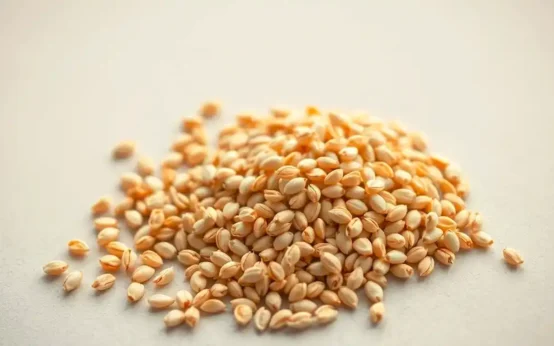 Health Benefit of Sesame Seed
Health Benefit of Sesame Seed 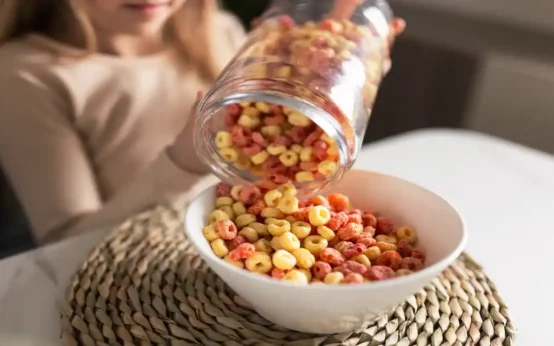 Healthiest Breakfast Cereal for Children
Healthiest Breakfast Cereal for Children 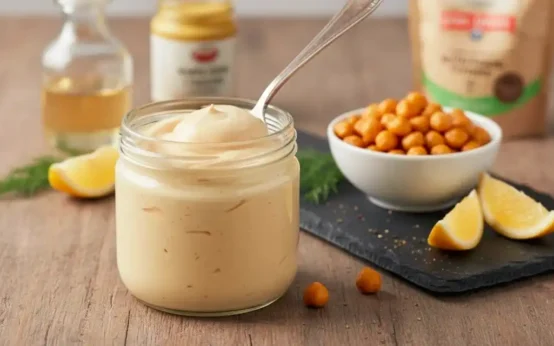 Vegan Oil Free Mayonnaise Recipe
Vegan Oil Free Mayonnaise Recipe  Nutrition to Enhance Athletic Performance
Nutrition to Enhance Athletic Performance 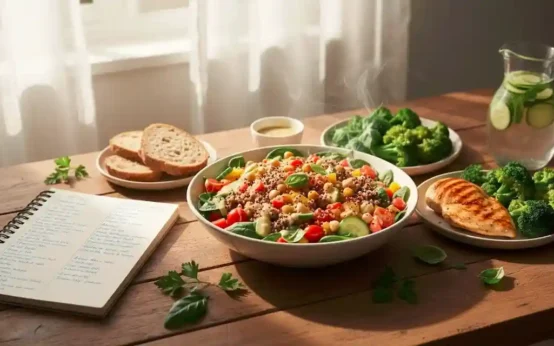 Tasty Healthy Low Cost Meals Recipes
Tasty Healthy Low Cost Meals Recipes 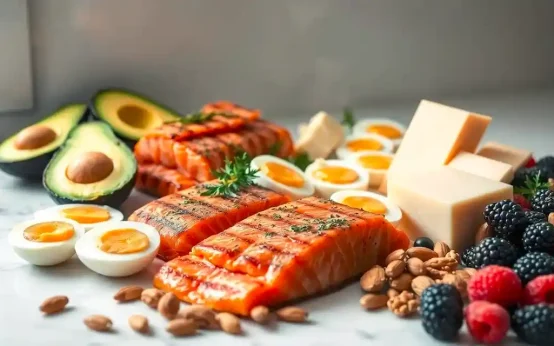 The Best Food for the Keto Diet
The Best Food for the Keto Diet